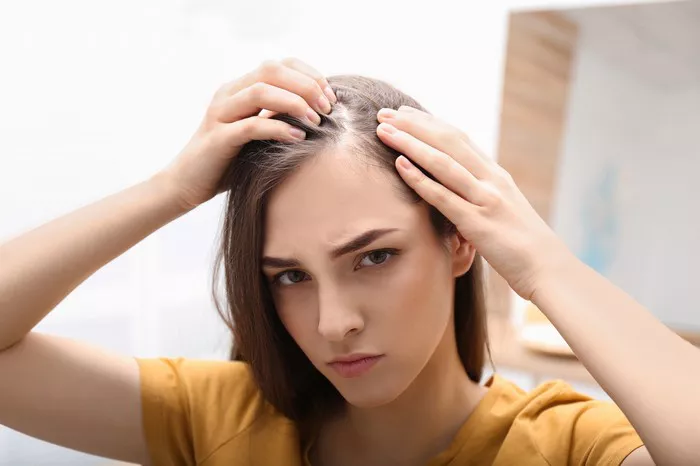Hair loss can be a distressing experience at any age, but when it occurs during adolescence, it can be particularly concerning. While hair loss is often associated with aging, various factors can contribute to its occurrence in teenagers. In this article, we will delve into the reasons why hair may be falling out at the age of 15 and explore potential solutions.
1. Hormonal Changes
At the age of 15, the body undergoes significant hormonal changes as part of puberty. Fluctuations in hormones, such as increased levels of androgens, can impact hair growth cycles. Androgens, often referred to as male hormones, are present in both males and females. An imbalance in androgens can lead to a condition known as androgenetic alopecia, or male-pattern baldness, which can affect teenagers as well.
2. Nutritional Deficiencies
Proper nutrition plays a crucial role in overall health, including the health of your hair. Inadequate intake of essential vitamins and minerals, such as iron, zinc, vitamin D, and biotin, can contribute to hair loss. Teenagers may be susceptible to nutritional deficiencies due to poor dietary choices or restrictive eating habits. A well-balanced diet with a focus on nutrient-rich foods is essential for maintaining healthy hair.
3. Stress and Emotional Well-being
The teenage years are often marked by increased stress and emotional challenges. Academic pressure, social issues, and other stressors can take a toll on both mental and physical health, including hair health. Stress-induced hair loss, known as telogen effluvium, can lead to excessive shedding of hair. Encouraging healthy stress management techniques, such as exercise, meditation, or counseling, can be beneficial for overall well-being.
4. Hairstyling Practices
Frequent use of heat styling tools, tight hairstyles, and chemical treatments can contribute to hair damage and loss. At the age of 15, experimenting with various hairstyles may be common, but it’s important to be mindful of the potential impact on hair health. Opting for hairstyles that don’t put excessive strain on the hair shaft and limiting the use of heat styling tools can help prevent unnecessary damage.
5. Medical Conditions
Certain medical conditions can contribute to hair loss in teenagers. Conditions such as alopecia areata, an autoimmune disorder causing patchy hair loss, or thyroid disorders can affect the hair growth cycle. If hair loss is persistent and accompanied by other symptoms, it is crucial to consult with a healthcare professional for a thorough examination and appropriate diagnostic tests.
6. Genetics
Genetics can play a significant role in determining an individual’s susceptibility to hair loss. If there is a family history of hair loss, especially at an early age, it increases the likelihood of experiencing similar issues. While genetic factors are not within one’s control, early intervention and lifestyle modifications can still have a positive impact on managing hair loss.
7. Hygiene and Scalp Health
Maintaining good hygiene and a healthy scalp is crucial for optimal hair growth. Infrequent washing, excessive use of harsh hair products, and poor scalp hygiene can contribute to hair loss. Using a mild shampoo, avoiding excessive washing, and keeping the scalp clean can promote a healthy environment for hair growth.
See Also: [Revealed!] 9 Essentials of Winter Hair Care for Healthy Hair
Conclusion
Experiencing hair loss at the age of 15 can be disconcerting, but understanding the potential causes is the first step toward finding solutions. Addressing hormonal imbalances, ensuring proper nutrition, managing stress, adopting healthy hairstyling practices, and addressing any underlying medical conditions are essential for maintaining a healthy head of hair. If the issue persists, seeking guidance from a healthcare professional or a dermatologist can provide personalized insights and recommendations for effective treatment. Remember, early intervention and adopting a holistic approach to hair health can make a significant difference in restoring and maintaining a full, healthy mane.


